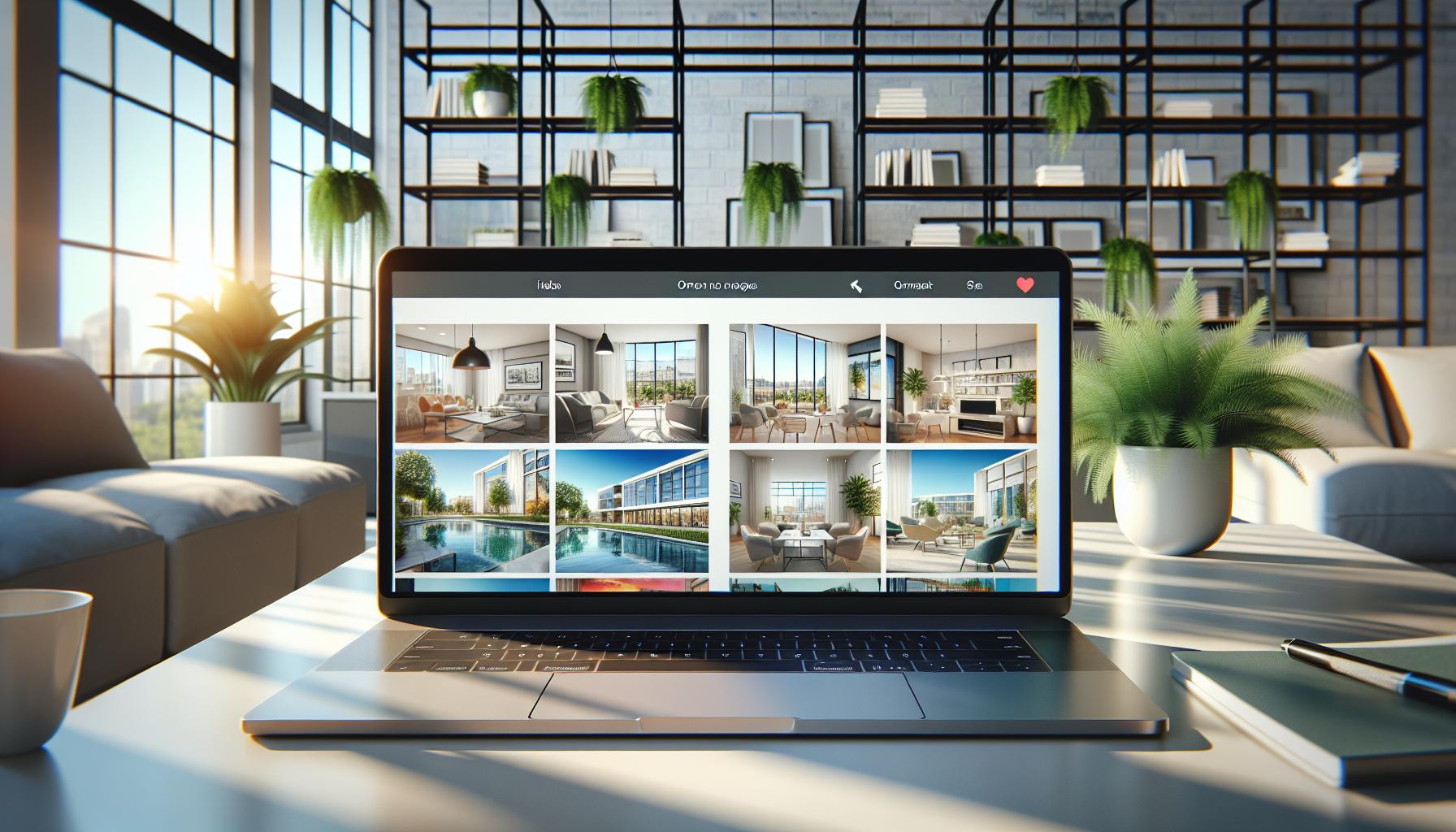In the fast-paced world of real estate, a captivating website can be the difference between a buyer’s dream home and their worst nightmare. Think of it as the digital curb appeal—if it doesn’t dazzle, potential clients might just keep scrolling. A well-designed site not only showcases listings but also tells a story, building trust and sparking excitement.
But let’s face it: nobody wants to visit a site that looks like it was designed in the ’90s. A modern, user-friendly interface is crucial for keeping visitors engaged and eager to explore. With the right design elements, real estate professionals can turn casual browsers into serious buyers, all while having a little fun along the way. So why settle for ordinary when extraordinary is just a click away?
Real Estate Web Site Design
Effective real estate website design significantly influences user experience and buyer engagement. A modern, visually appealing site captures attention and encourages exploration. Higher-quality designs encourage visitors to spend more time browsing property listings and related content, ultimately leading to higher conversion rates.
User experience plays a critical role in keeping users engaged. Intuitive navigation allows visitors to find properties effortlessly. Responsive design adapts to various devices, ensuring accessibility on smartphones, tablets, and desktops.
Trust and credibility stem from professional design. Features like high-resolution images and virtual tours enhance a site’s reputation and make listings more attractive. Positive first impressions contribute to lasting relationships with potential buyers.
Search engine optimization contributes to a site’s visibility. Well-structured design helps in ranking higher on search engines, attracting more traffic. Incorporating relevant keywords and optimizing load speed increases site performance and user satisfaction.
Engaging content further enhances the value of real estate websites. Blogs, market insights, and community information establish authority and provide additional resources for visitors. An informative site keeps users coming back for updated listings and expert advice.
Finally, an extraordinary website stands out in a competitive market. Investing in quality design translates into long-term success. Prioritizing an engaging and functional real estate website creates opportunities for greater sales and stronger brand loyalty.
Key Elements Of Effective Real Estate Web Site Design

Effective real estate web design relies on key components that enhance functionality and appeal. Focusing on user experience ensures visitors remain engaged and informed.
User Experience Considerations
User experience plays a crucial role in retaining visitors. An intuitive layout allows users to find information effortlessly. Clear calls to action guide them toward making inquiries or scheduling viewings. Fast-loading pages significantly reduce bounce rates, keeping potential buyers engaged. Accessible content, including easy-to-read fonts and sufficient white space, enhances readability and promotes a positive interaction with the site.
Visual Aesthetics
Visual aesthetics create an immediate impact on first-time visitors. Stunning property images draw attention and showcase listed homes effectively. A consistent color scheme supports branding and fosters a cohesive look throughout the site. High-quality visuals paired with engaging typography enhance overall appeal. Incorporating videos and virtual tours adds dynamism, allowing potential buyers to explore properties from anywhere.
Responsive Design
Responsive design ensures seamless access across devices. Compatibility with smartphones, tablets, and desktops is essential in today’s mobile-centric world. A flexible layout adapts to different screen sizes, providing an optimal viewing experience. Navigation remains user-friendly regardless of device, facilitating easy information retrieval. Enhanced performance on mobile devices boosts user satisfaction and encourages repeat visits.
Best Practices For Real Estate Web Site Design

Great real estate websites emphasize usability and aesthetic appeal. Focusing on intuitive design helps keep potential buyers engaged.
Navigation Strategies
User-friendly navigation enhances the overall experience. Design easy-to-understand menus that guide visitors seamlessly to listings and essential content. Organizing information into clear categories simplifies the search for properties. Utilizing breadcrumb navigation offers a straightforward path back to previous pages. Implementing a search bar provides quick access to specific listings. Prioritize mobile-friendly navigation to accommodate users on various devices. Maintain consistency in navigation elements to build familiarity among returning visitors.
Content Layout
Effective content layout serves as the foundation for user engagement. Place high-quality images prominently to capture attention instantly. Arrange property information in digestible blocks, including crucial details like price and location. Use ample white space to avoid overcrowding, allowing content to breathe. Logical grouping of related information aids comprehension and quick scanning. Employ engaging headings and bullet points to facilitate easy reading. Highlight calls to action within the layout to encourage users to take the next step, such as scheduling a viewing or signing up for updates.
Tools And Technologies For Real Estate Web Site Design

Effective real estate website design relies on various tools and technologies that enhance functionality and user experience. Choosing the right resources can streamline the development process and create visually appealing sites.
Web Design Software
Popular web design software simplifies the creation of stunning real estate websites. Platforms like WordPress and Wix offer customizable templates, making it easy for users to set up their sites without extensive coding knowledge. Squarespace stands out for its elegant designs, while Shopify provides e-commerce functionality for real estate businesses that engage in property-related sales. Various plugins enhance website features, allowing integration of virtual tours, SEO optimization tools, and lead capture forms. Ultimately, selecting the appropriate software can significantly influence a site’s overall aesthetics and performance.
Coding Languages
Employing relevant coding languages ensures a functional and dynamic real estate website. HTML lays the foundational structure, while CSS adds visual flair through design elements and styles. JavaScript enhances interactivity, allowing for features like property sliders and dynamic maps. Developers often turn to PHP for server-side integration, especially when working with content management systems. Utilizing frameworks like React or Angular can accelerate development and improve user experience. Collectively, these technologies work together to create responsive, fast-loading, and visually appealing websites that capture user attention.
Sales and Brand Loyalty
A well-designed real estate website is more than just an online presence; it’s a powerful tool that can significantly impact success in a competitive market. By prioritizing user experience and aesthetic appeal, real estate professionals can create sites that not only attract visitors but also convert them into loyal clients.
Investing in modern design practices and effective tools ensures that a website stands out while providing valuable information to potential buyers. As the digital landscape continues to evolve, staying ahead with innovative design will foster trust and engagement, ultimately leading to increased sales and brand loyalty.



